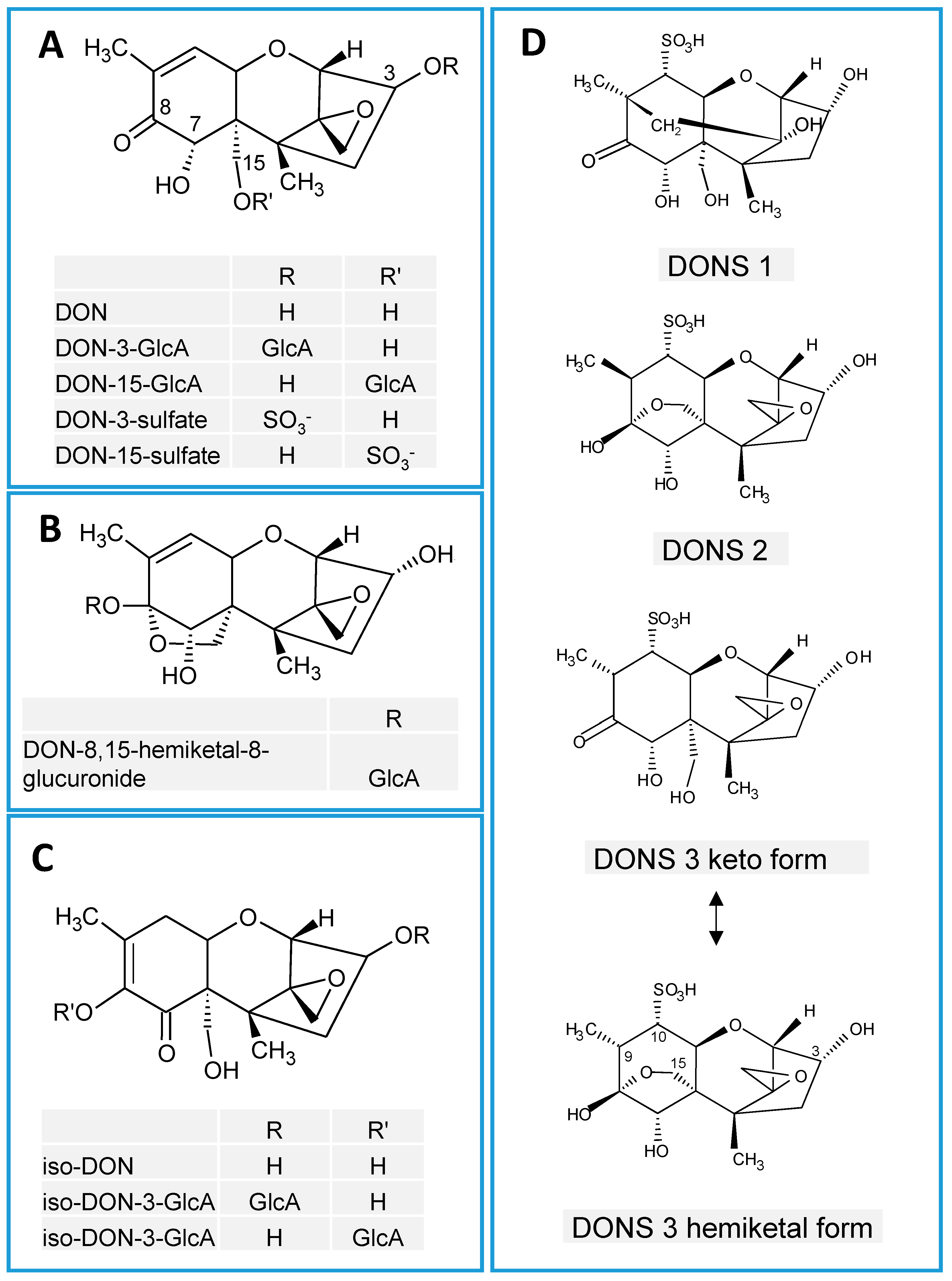Correction: Pestka, J.J., et al. Sex Is a Determinant for Deoxynivalenol Metabolism and Elimination in the Mouse. Toxins 2017, 9, 240
Reference
- Pestka, J.J.; Clark, E.S.; Schwartz-Zimmermann, H.E.; Berthiller, F. Sex Is a Determinant for Deoxynivalenol Metabolism and Elimination in the Mouse. Toxins 2017, 9, 240. [Google Scholar] [CrossRef] [PubMed]

© 2019 by the authors. Licensee MDPI, Basel, Switzerland. This article is an open access article distributed under the terms and conditions of the Creative Commons Attribution (CC BY) license (http://creativecommons.org/licenses/by/4.0/).
Share and Cite
Pestka, J.J.; Clark, E.S.; Schwartz-Zimmermann, H.E.; Berthiller, F. Correction: Pestka, J.J., et al. Sex Is a Determinant for Deoxynivalenol Metabolism and Elimination in the Mouse. Toxins 2017, 9, 240. Toxins 2019, 11, 238. https://doi.org/10.3390/toxins11050238
Pestka JJ, Clark ES, Schwartz-Zimmermann HE, Berthiller F. Correction: Pestka, J.J., et al. Sex Is a Determinant for Deoxynivalenol Metabolism and Elimination in the Mouse. Toxins 2017, 9, 240. Toxins. 2019; 11(5):238. https://doi.org/10.3390/toxins11050238
Chicago/Turabian StylePestka, James J., Erica S. Clark, Heidi E. Schwartz-Zimmermann, and Franz Berthiller. 2019. "Correction: Pestka, J.J., et al. Sex Is a Determinant for Deoxynivalenol Metabolism and Elimination in the Mouse. Toxins 2017, 9, 240" Toxins 11, no. 5: 238. https://doi.org/10.3390/toxins11050238
APA StylePestka, J. J., Clark, E. S., Schwartz-Zimmermann, H. E., & Berthiller, F. (2019). Correction: Pestka, J.J., et al. Sex Is a Determinant for Deoxynivalenol Metabolism and Elimination in the Mouse. Toxins 2017, 9, 240. Toxins, 11(5), 238. https://doi.org/10.3390/toxins11050238




